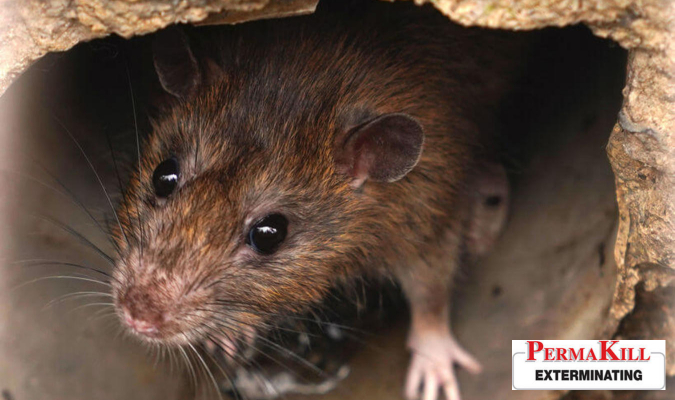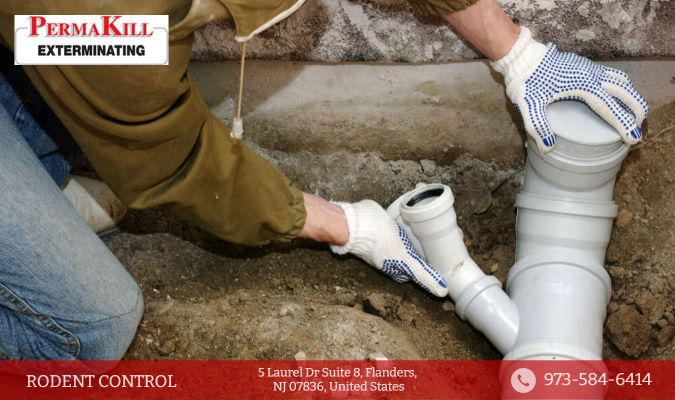


Rats are small creatures that can fit themselves in tiny spaces to get their way around and survive. One tiny space where you might find rats in your home is in your sewer pipes. This leads to a number of headaches you have to deal with, from property damage to exposure to various rat diseases.
So what are the different methods to get rid of rats from sewer pipes? To eliminate these pests, then you should repair any cracks in the piping, remove rodent living sources, and catch the rats in the sewer pipes. Afterwards, you would want to check for any remaining signs of these creatures like blocked piping, creaking noises, slow water flow, and cracks and dents to know whether you have completely eliminated them.
It’s a common misconception that rats in sewer pipes can only be found in the city or metropolitan areas. But as long as they can fit in the pipes, there’s always a chance that they might come through. Some species of rats like the Norway rat are great swimmers, so they can swim through your drainage and manage their way to your toilet bowl and bathroom, leading to an infestation.
Eliminating rats in sewer pipes can be tricky since these are small and hard to reach. But with the right tools and approach, you can safely remove these pests so that they don’t cause any problems inside your home. Here are some ways to eliminate rats in sewer pipes:
To ensure that these rodents can’t go through your pipes, make sure that there is no damage in your piping. Repairing any cracks or holes in your piping with the proper materials can help you make sure that none of these pests will be found in these places. Here are some recommended products and materials to help control rat infestations:
Learning about different rat resources helps you determine what attracts them to your sewer pipes and bathroom. Different substances and materials that go through your pipes can attract pests into your home, causing infestations. Here are some things that attract rats into your drainage system:
Repairing cracks in pipes and removing rat resources can greatly help you eliminate rats in your drainage system. But if you’re looking for other solutions for the problem, then you may want to try these different methods to catch the pests:
| Kind of Trap | How It Kills Rats | How It’s Used | Effectiveness |
| Snap Traps | Snap traps use a quick trigger system to trap rats and kill them. | These kinds of traps use an enticing bait which helps lure in the rodent. | Its effectiveness depends on how strong the trigger system is. Stronger traps kill the rodents quicker. |
| Electronic Traps | Electronic traps kill rats by delivering a high-voltage, humane shock when they come to contact with it. | These traps lure mice into a chamber where they are electrocuted. | The high-voltage shock these kinds of traps deliver instantly kills rats. |
| Catch and Release | Catch and release traps are considered one of the most humane ways to catch rats. It’s simple: it catches the rodent and you can release it afterwards. | It uses a bait to trap a rodent inside a small cage. | These traps don’t kill rats. It only traps a rodent inside, and it is your decision whether you want to kill the rodent or not. |
| Automatic Gas Trap | Automatic gas traps use CO2 gas to trap and kill rats. | These traps make use of a special lure to make it attractive to rodents. | When the rat breathes in the gas released by this trap, it will drop and die. |

After attempting to eliminate rats in your sewer pipes, you should check for any remaining signs of these pests. Make sure to carefully inspect whether or not you were successful in getting rid of the pests to prevent worse problems. Here are some signs that may determine whether an infestation is still present:
Blocked piping is one of the most common signs of rats or mice in your sewer pipes. If your bathroom’s drainage system isn’t working properly, then you are probably not yet successful in eliminating all the rats. Regularly inspect your pipes for anything that can cause blocks to prevent further problems from happening.
If you notice any creaking noises in your pipes, then this can be a sign that there is still an infestation in your property. Remember that these rodents are nocturnal creatures, so you are more likely to hear these creaking noises during the nighttime. These noises may also sound like creatures that are squeaking or running in your piping.
Slower water flows from your faucet can mean that there are still rats inside your drain pipes. If your water flow isn’t in good working order, then there must be something in your pipes. This can either mean that there are still live rats present, or bodies of dead rats have caused slower water flow so remember to regularly check your pipes for anything that may cause this.
Any cracks or bends in your drainpipes can indicate that rats are still present. Check for anything that seems to be out of shape and repair these immediately to prevent infestations. Small openings in your pipes can serve as access points for these rodents.
If you are struggling to find ways to eliminate rats in your drainage system and property, then it is best to call the help of professionals. Here at PermaKill Exterminating, we offer professional rodent control services in Morris, Somerset, and nearby areas. Our team is composed of experts who all value professionalism.
We are dedicated to offer you the best pest control solutions that help solve your problems. PermaKill Exterminating guarantees to provide you with scientifically advanced pest management services. You may give us a call to know more about us and the services that we offer.
Learn more: Are Landlords Responsible For Pest Control?